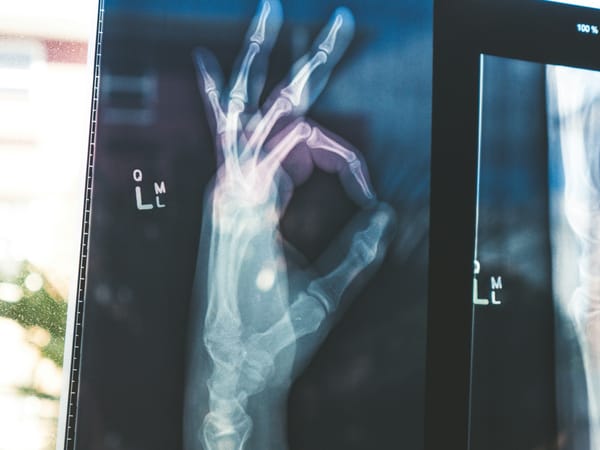There is Huge Value in Retrospective Clinical Trials
Insights into why there is huge value in retrospective clinical trials for your practice.

Retrospective clinical trials look backwards at data that has already been collected.
In the day to day of running your practice, you see patients and record data all the time, you may just not realize it.
Your patient charts are a goldmine for new insights into care, all you have to do is go digging.
Case Study #1 💼
Here is an example from a client retrospective trial. I encourage you to read the full study.
An ophthalmologist had collected an enormous amount of data from two biometers—diagnostic equipment that are used prior to cataract surgery.
They decided to perform a retrospective study to compare these 2 devices. When we dug through the data we found that these machines actually performed quite similar. An interesting enough finding to publish in a medical journal.
Case Study #2 💼
Here is an example from another client retrospective trial. I again encourage you to read the full study.
A surgical center had collected data from hundreds of patients using two different surgical planning techniques.
They wanted to conduct a retrospective study to compare the outcomes and see if one planning technique was better than the other. We found that both techniques were great, but one was slightly better than the other. The results were eventually published in a medical journal.
How to Perform a Retrospective Clinical Trial 🥼
To extract value from the mountain of data that you are already sitting on, there is a simple framework to follow. DESIR, which stands for Design, Ethics, Study, Interpet, and Report.
- Design - Plan the clinical trial and secure funding.
- Ethics - Prepare all necessary documentation for IRB/REB submission and approval.
- Study - Conduct the clinical trial.
- Investigate - Analyze the collected data.
- Report - Publish results at conferences and in peer-reviewed articles.
Retrospective Clinical Trial: Design 🖼️
At this stage there are a few key items to complete:
- Determine a research question - Figure out what research question you want to answer. A good place to start is to investigate what is already published to see if you can identify a gap in the literature.
- Choose your type of study - You won't be able to have a prospective, randomized, double-blind study. However, there are a couple other things to consider, such as a single or multi-arm study and if you will include data from other investigators or sites.
- Secure funding - Will you self fund the study? You can also apply for grant funding from local, state/provincial, and federal governments, or pharmaceutical and medical device companies.
Retrospective Clinical Trial: Ethics 👍
For a retrospective chart review, the IRB/REB will likely determine that the research is exempt from ongoing IRB oversight, but only the IRB/REB can make that determination.
The IRB/REB will also need to grant a waiver of informed consent before you can review the charts. Without it, each subject will need to consent before you can use their data.
The submission will require preparation of essential documents. These include:
- Protocol - A study protocol is a formal representation of your study design.
- Curriculum Vitae - An overview of your education, experience, previous clinical trials, and publications.
- Medical License - A copy of your medical license.
- Good Clinical Practice Training - A copy of a training certificate showing that you have completed GCP or human subjects research training.
- IRB/REB Specific Documents - The board will have their own internal forms that gather information about you, your site, and the study.
Retrospective Clinical Trial: Study 🗒️
With IRB/REB approval, you can now review patient charts and extract relevant data.
If your data is primarily in physical charts then you are going to need to create a spreadsheet and digitize the data.
If you have electronic health records it may even be easier to grab the data if you can mass export. Data may also be able to be mass exported from diagnostic equipment or surgical suite software.
However, make sure you don't export personal health information such as names, birth dates, addresses, email addresses! All data should be de-identified.
Retrospective Clinical Trial: Investigate 📊
Once all the data is collected and organized into a spreadsheet you can analyze and look for insights.
What you report will depend on the data. Continuous data is usually summarized as mean with standard deviation. Survey data, especially data from non-validated surveys is better summarized using percentages. For example, 47% of participants selected Yes on the survey at Visit 1 compared to 78% at Visit 2.
Simple descriptive statistics can generally be completed in most spreadsheet software without the need for statistical software. However, inferential statistics will likely require a biostatistician to complete.
Retrospective Clinical Trial: Report 📝
One of the best places to show off your results is in a peer-reviewed medical journal. That way, other professionals can learn from your study and improve their practice.
This type of specialized writing can be outsourced to a designated medical writer, but here are the general 4 parts of a paper.
- Introduction - the problem, why it is relevant, and what question you are trying to answer.
- Methods - how you investigated the research question.
- Results - what you uncovered.
- Discussion - why your findings are relevant and how they compare to and expand current understanding.
Is it Expensive to Conduct a Retrospective Clinical Trial?
No!
These types of studies are much cheaper to do compared to a prospective study. If you do most the work internally, the only unavoidable cost is paying the IRB/REB review of your study.
Is it Complicated to Conduct a Retrospective Clinical Trial?
Also no!
If you follow the framework provided here, DESIR, you will be able complete a retrospective trial from design to publication. Starting with a retrospective study the best place to get your feet wet in clinical research.
Summary
You are already sitting on the data you need to become a published author in a medical journal. The data you already have collected will help you and other professionals improve their practice. All you have to do is follow the framework above.
If you found this information useful, please consider sharing. If you want more of this content, please consider subscribing. If you have insights of your own please consider reaching out to me. Get in touch!




